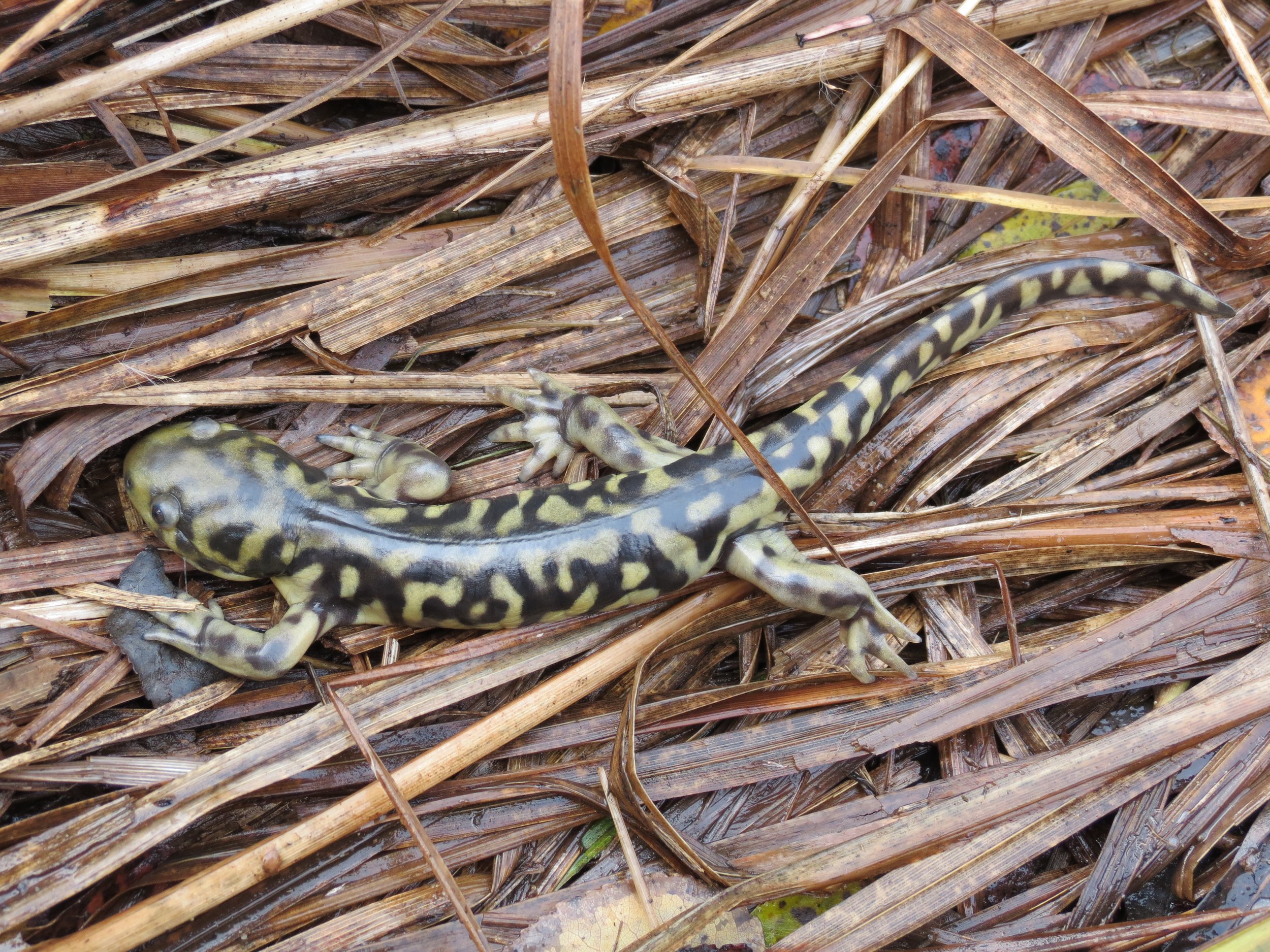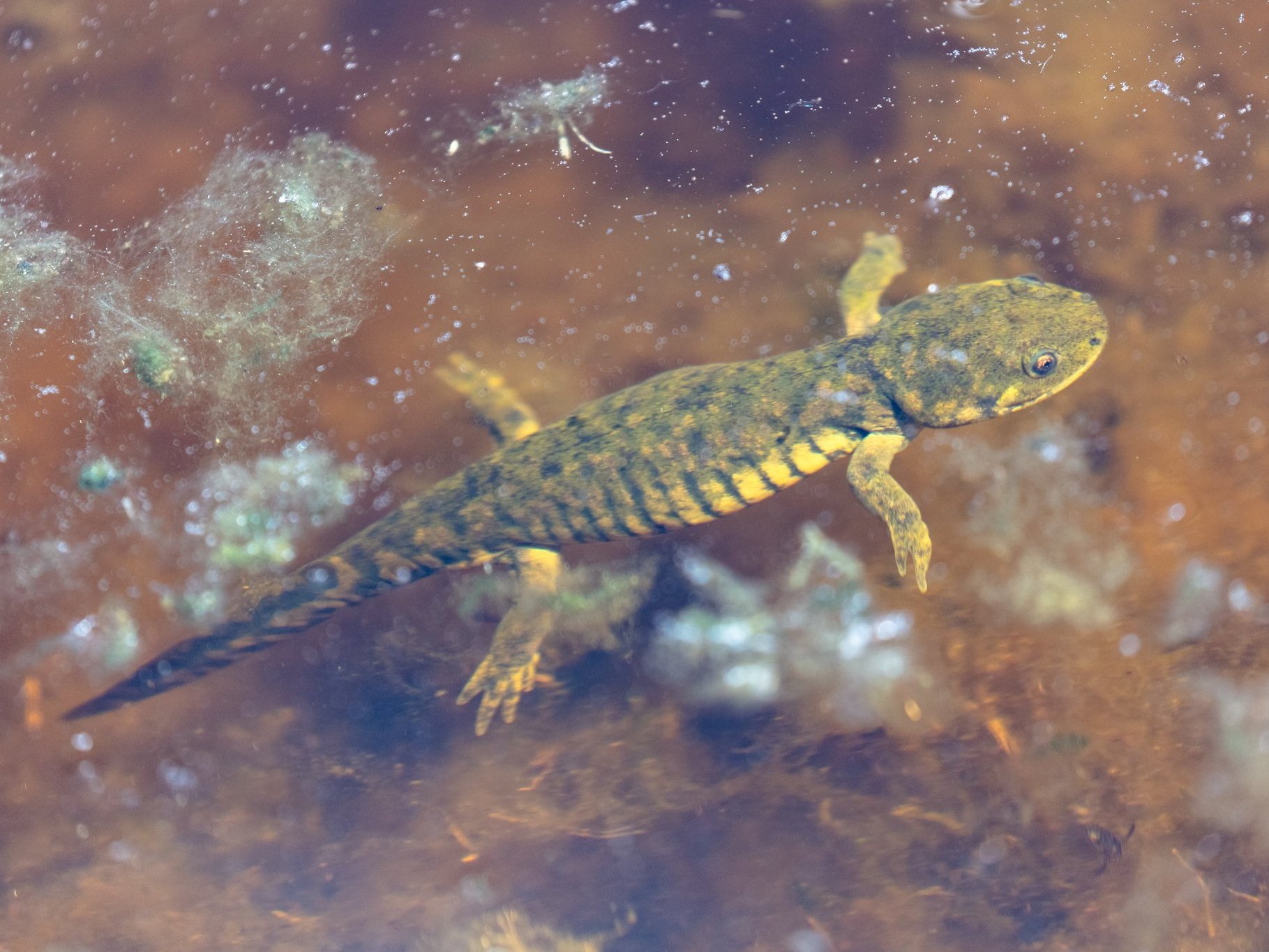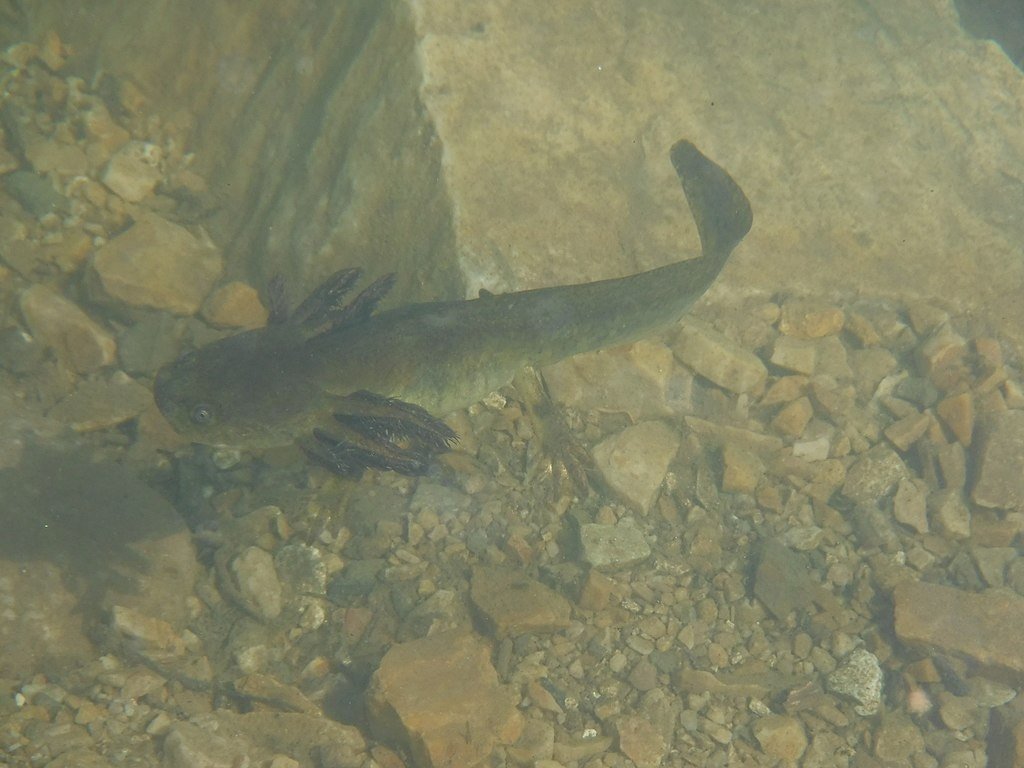Western Tiger Salamander (Ambystoma mavortium)
The western tiger salamander is one of the largest salamander species in North America. These nocturnal amphibians are often elusive and seldom seen by Albertans. Like their feline namesake, the western tiger salamander is a fierce predator that consumes a wide variety of prey.
Photo by Steph Weizenbach
Why they Matter to Us
Tiger salamanders often fill the role of top predator in fishless habitats, controlling invertebrate abundance and influencing nutrient cycles.
Tiger salamanders are often used as model organisms in evolutionary, ecological, and physiological studies.
Like many other amphibians, tiger salamanders are sensitive to environmental changes and can act as an indicator of environmental health.
The prairie population of western tiger salamanders, including those found in Alberta, is listed as a Species of Special Concern by the Committee on the Status of Endangered Wildlife in Canada.
How You Can Help
Support protected areas in the Edmonton region (such as EALT). You can donate or volunteer your time to help with conservation efforts.
Help protect wetlands by preventing run-off of household products.
Wash your car at the carwash or use biodegradable soap.
If using pesticides or herbicides, follow the directions carefully and avoid use during unfavourable weather conditions.
Make your yard and property wildlife friendly. Tiger salamanders may become trapped in window wells, sump pumps, or buckets during fall migration.
How to Identify
Identify by Sight
Barred Tiger Salamander (Ambystoma mavortium) by Chris Friesen is licensed under CC BY 4.0.
To identify the western tiger salamander, look for these distinguishing features:
Large salamander around 20 cm long, though they may reach 30 cm.
Broad head with small eyes.
Laterally compressed tail.
Dark spots and stripes that create a net-like pattern on an olive-green to black background.
Larvae are dull yellow to dark brown with a paler belly and three feathery external gills on either side of the head.
Identify by Sign
Eggs are laid singly or in small clusters attached to twigs, stones, or aquatic vegetation.
Where to Find
Tiger salamanders can be found in a wide range of habitats, including grassland, parkland, meadows, forests, and even semi-deserts in arid regions. They breed in permanent or semi-permanent fishless waterbodies like lakes, ponds, wetlands, and slow-moving streams. Adults generally live close to their breeding sites and may seek cover in loose or sandy soils, under rocks or woody debris, or in small mammal burrows.
Life Cycle
Barred Tiger Salamander (Ambystoma mavortium) by Colin Croft is licensed under CC BY 4.0.
Tiger salamanders breed in early spring once their breeding sites are free of ice. Females lay eggs after breeding, attaching the eggs to submerged twigs, aquatic vegetation, or other debris. Clutch size varies depending on geographic location and female body size, but ranges from 100-5000 eggs. Aquatic larvae hatch in two to three weeks and metamorphose into terrestrial juveniles after three to four months depending on water temperature and food availability, among other factors. Males reach maturity at two years old, while females take three to five years to mature.
Food Chain
Tiger salamanders are opportunistic predators and feed on a variety of invertebrates, including worms and insects. They may also feed on other amphibians.
Tiger salamander larvae feed on aquatic invertebrates and other larval amphibians. Some larvae are cannibalistic and feed on other tiger salamander larvae.
Tiger salamander larvae may be eaten by giant water bugs, dragonfly nymphs, pelicans, and herons.
Introduced species of fish, including sportfish like rainbow trout, are significant predators of tiger salamander larvae. The larvae’s anti-predator defenses are not effective against fish, so the introduction of fish into tiger salamander breeding habitat can cause large population declines.
Photo by Jacob Frank
Barred Tiger Salamander (Ambystoma mavortium) by Isaac Krone is licensed under CC BY 4.0.
Fun Facts
Some tiger salamanders do not morph into terrestrial forms and instead retain their gills and remain fully aquatic for their entire lives. This is called neoteny and is more common when the terrestrial habitat is unsuitable or the breeding water body is permanent.
Unlike frogs, salamanders do not produce vocalizations. They may communicate with each other using touch.
Tiger salamanders produce milky secretions from glands on their back and tail. The secretion is poisonous if it is eaten.





